#the longmen caves
Photo
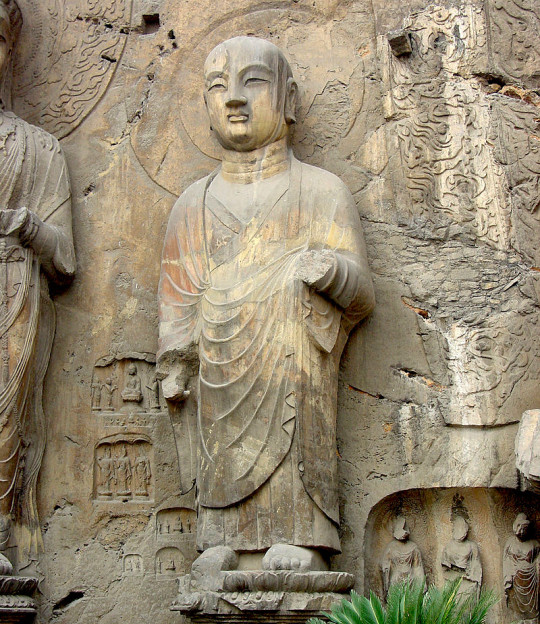
The Quest for Buddhism (89)
Early Buddhism and the disciples
Ten Principal Disciples No. 10: Ananda - "Treasurer of the Dhamma"
Ananda (Ref1) was one of the 10 principal disciples (Ref) of the Buddha. He was the first cousin of the Buddha. As the Buddha's closest aide, he was always listening to the Buddha's teachings, which is why he is known as the 'Treasury of Dhamma'.
In Zen Buddhism, he is considered to be the 3rd founder of the dhamma archive (the direct transmission of the profound knowledge of the teachings), following Mahakasyapa (Ref2).
In the early years of the Buddha's ministry, the Buddha had several personal attendants. However, when the Buddha was aged 55, the Buddha announced that he had need for just a permanent attendant. Initially, several of the Buddha's foremost disciples responded to his request, but the Buddha did not accept them.
All the while Ananda remained quiet. When he was asked why, he said that the Buddha would know best whom to choose, upon which the Buddha responded by choosing Ananda.
He tended the Buddha for a total of 25 years, a duty which entailed much work.
Most of the texts of the early Buddhist, his relationship with the Buddha is depicted as warm and trusting: when the Buddha grew ill, Ananda had a sympathetic illness; when the Buddha grew older, Ananda kept taking care of him with devotion.
Ananda also accompanies the Buddha in the last year of his life, and therefore is witness to many tenets and principles that the Buddha conveys and establishes before his death, including the well-known principle that the Buddhist community should take his teaching and discipline as their refuge, and that the Buddha will not appoint a new leader. The final period of the Buddha's life also shows that Ananda is still very much attached to the Buddha's person, and he witnesses the Buddha's passing with great sorrow.

仏教の探求 (89)
初期仏教と弟子たち
十大弟子その十: 阿難 (あなん、梵/巴:アーナンダ・阿難陀)〜多聞第一 (たもんだいいち)
アーナンダ(参照1) はブッダの従弟で、釈迦の十大弟子の一人であり、ブッダの最側近として常に説法を聴いていたことから多聞第一 (たもんだいいち) と称せられた。
禅宗では摩訶迦葉 (まかかしょう、梵: マハーカーシャパ、参照2)の跡を継いで付法蔵 (教えの奥義を直伝すること) の第3祖であるとする。
初期のブッダには、数人の付き人がいた。しかし、ブッダが55歳になったとき、ブッダはただ一人の永久的な侍者が必要であると告げた。当初、ブッダの一番弟子たち数人が応対したが、ブッダは誰も受け入れなかった。
その間、アーナンダはずっと黙っていた。その理由を尋ねると、「誰を選ぶかはブッダが一番よく知っている」と言い、ブッダはそれに答えてアーナンダを選んだ。
彼は合計25年間、常にブッダに付き添い世話をし、多くの労力を必要とする任務をこなした。初期仏典の多くは、ブッダが病気になるとアーナンダが同情し、ブッダが高齢になると献身的に世話をするなど、ブッダとの信頼関係は温かく描かれている。
アーナンダはブッダの晩年にも随行しているため、ブッダが生前に伝え、確立した多くの教義や原理を目撃している。よく知られているのは、仏教界は彼の教えと訓練を拠り所とすること、ブッダは新しい指導者を任命しないこと、などである。また、アーナンダがブッダの人柄にまだ愛着を持ち、ブッダの死を悲しみながら見守っていることも、ブッダの末期の姿からうかがえる。
#ananda#10 principal disciples#buddha's primary attendant#buddha's cousin#Treasurer of the Dhamma#buddha#buddhism#mahakasyapa#history#longmen caves#philosophy#nature#art
92 notes
·
View notes
Photo

Emperor Xiaowen and his entourage worshipping the Buddha, ca.522-23
Northern Wei dynasty, China
From the Central Binyang Cave, Longmen, Henan province
Limestone with traces of pigment
H. 82 in. (208.3 cm); W. 12 ft. 11 in. (393.7 cm)
Together with a companion piece showing an empress and her attendants (now in the Nelson-Atkins Museum of Art, Kansas City), this depiction of an emperor and his entourage once adorned the Central Binyang Cave (also known as Cave 3) in the Longmen complex, near Luoyang, in Henan province. It was positioned centrally on the northeast wall between a group of protective semidivinities above and a narrative debate scene below. Xuanwu commissioned the construction of the Central Binyang Cave in honor of his father, the emperor Xiaowen (r. 471–99), and his mother, the dowager Wenzhou (d. 494); the emperor and empress in the reliefs are therefore believed to refer to his parents. A figure wearing court garments and holding a tasseled baton leads the procession. He is followed by a smaller figure wearing armor and another who stands before the emperor, holding an incense burner. The trees originally indicated the point at which the procession moved around a corner, from the north to the east wall. Several of the attendants hold lotuses or other flowers and offerings, and the entire procession can be understood as making offerings to the Buddhas in the cave, an act of merit making that would continue in perpetuity and improve the future lives of the participants.
Collection of the Metropolitan Museum of Art
#The Met#Metropolitan Museum of Art#Northern Wei dynasty#Northern and Southern dynasties#6th century#relief#religion#art#art history#Chinese#Binyang Caves#Longmen Grottoes#Henan#Xuanwu era#period dress#stone#limestone#portrait
1 note
·
View note
Text

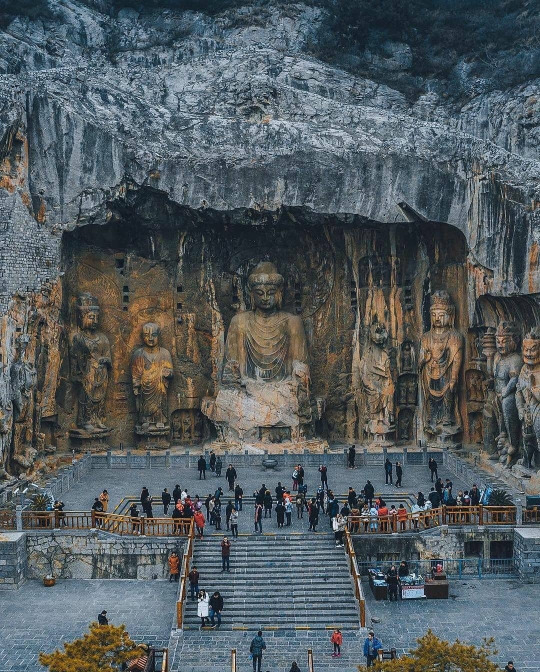
The Longmen Grottoes (龙门石窟) 'Dragon's Gate Grottoes, or Longmen Caves are some of the finest examples of Chinese Buddhist art.
10K notes
·
View notes
Photo
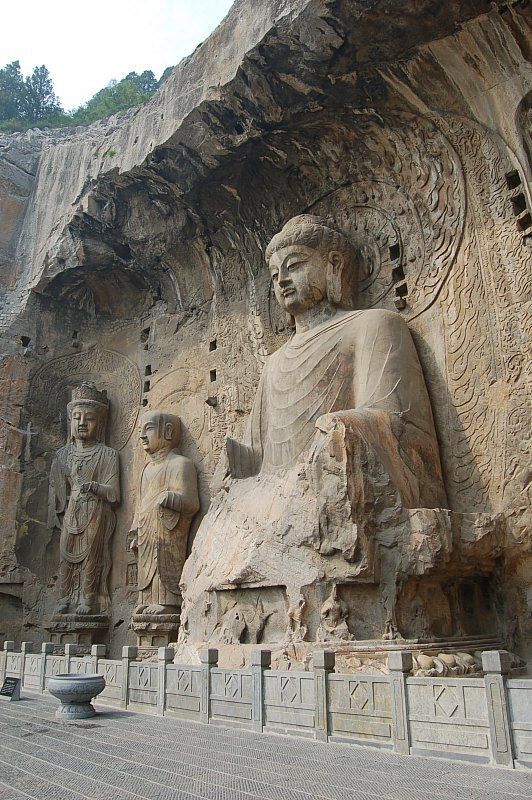
Longmen Grottes (Longmen Caves) near Luoyang City in Henan Province, China.
25 notes
·
View notes
Quote
Longmen Grottoes in Henan Province, China. Over 2,300 caves filled with over 100,000 statues of all sizes. 4th-10th-centuries CE.

39 notes
·
View notes
Photo

Longmen Grottoes in Henan Province, China. Over 2,300 caves filled with over 100,000 statues of all sizes. 4th-10th-centuries CE.
29 notes
·
View notes
Text
Longmen Grottoes
Longmen Grottoes (World Cultural Heritage, China AAAAA-level tourist attraction)
The Longmen Grottoes are the treasure house of stone carving art with the largest number of statues and the largest scale in the world. It has been rated as "the highest peak of Chinese stone carving art" by UNESCO and ranks first among the major grottoes in China. Unit, AAAAA-level tourist attraction. (14 main attractions)
The grottoes in the Longmen area were first excavated in the Northern Wei Dynasty, flourished in the Tang Dynasty, and finally in the late Qing Dynasty. After more than 10 dynasties, including Northern Wei, Eastern Wei, Western Wei, Northern Qi, Sui, Tang, Five Dynasties, Song, Ming, and Qing Dynasties, it has been built for more than 1,400 years. It is the longest grotto in the world. Among all the caves in Longmen, about 30% of the caves in the Northern Wei Dynasty, 60% in the Tang Dynasty, and only about 10% in other dynasties.
After research, it was found that the Longmen Grottoes were built by Tianzhu (now India), Silla (now South Korea), Tocharo (Siberia), Kanguo (Central Asia) and other countries, and now they have found Western musical instruments, European patterns, ancient Greek stone pillars, etc. The extraterritorial elements are the product of the fusion of diverse civilizations such as Greece, Persia, India and China, and can be called the most internationalized grotto in the world.
Geographical environment
The Longmen Grottoes are located in the southern suburb of Luoyang, the ancient capital. The two mountains face each other, the Yishui River flows, the Foguang Mountains are beautiful, and the scenery is beautiful.
Longmen, also known as Yique, is where the east and west mountains face each other, and the Yihe River flows through it. From afar, it looks like a natural gate, so it was called "Yique" in ancient times.

Longmen Landscape

Longmen Yique
Statue of the Locanabuddha

Locanabuddha
Buddha statues: a total of nine bodies. The main Buddha in the middle is the Great Buddha of Lusena, carved by Wu Zetian according to his own appearance and manners. On the right is the eldest disciple Kasyapa, on the left is the younger disciple Ananda, and then is Samantabhadra Bodhisattva (left) and Manjusri Bodhisattva (right). The heroic and vigorous king, the aggressive warrior and the master Flushena together constitute a group of artistic group images with rich modal texture.
Lord Buddha: Locanabuddha is the Sambhogakaya Buddha, which means the light shines all over the place. The height is 17.14 meters, the head is 4 meters high, and the ears are 1.9 meters long. It is famous for its mysterious smile and is praised as "Oriental Mona Lisa" and "the most beautiful statue in the world" by foreign tourists. The Buddha statue has a plump and round face, wavy hair lines on the top of the head, eyebrows curved like a crescent moon, with a pair of beautiful eyes gazing down slightly, showing a peaceful smile, like a wise and kind middle-aged woman, which is respectable and not afraid.
Samantabhadra Bodhisattva, the free translation of Sanskrit Samantabhadra, has also been translated as Banji Bodhisattva, and transliterated as Sanmando Bhadra. Samantabhadra Bodhisattva is one of the four bodhisattvas of Chinese Buddhism. It symbolizes virtue and conduct, and corresponds to Manjushri, who symbolizes wisdom and virtue. He is also the left and right attendant of Sakyamuni Buddha. In addition, Vairocana Tathagata, Manjushri Bodhisattva, and Samantabhadra Bodhisattva are honored as the "Three Saints of Huayan".

On the left is the "Tang Dynasty After the Journey" drawn by Zhang Xuan in the Tang Dynasty. Wu Zetian carved the Lushena Buddha in the Longmen Grottoes according to his own appearance.

Binyang South Cave

Lotus Cave
Value influence: The lotus dome of the Great Hall of the People is designed based on this lotus.
The smallest Buddha statue in the Longmen Grottoes is only 2 centimeters high. These small thousand Buddhas are located above the south wall of the Lianhua Cave, which are vivid, detailed and lifelike.

Xiangshan Temple

Digital restoration
2 notes
·
View notes
Photo
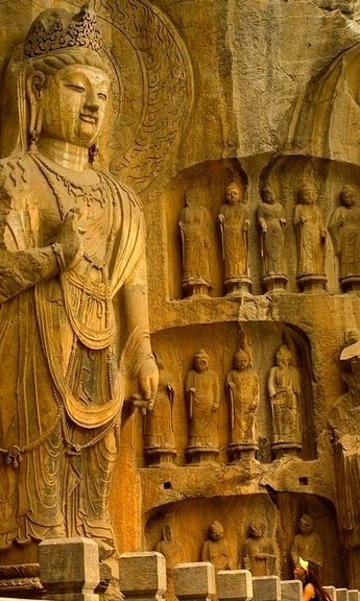
Buddha statues at Longmen Caves in Henan Province, China
1 note
·
View note
Text
Rock-carved statues at Longmen Caves in Henan, China

0 notes
Text
Rock-carved statues at Longmen Caves in Henan, China

0 notes
Text
Buddha statues at Longmen Caves in Henan Province, China

0 notes
Text
0 notes
Photo

Longmen Grottoes in Henan Province, China. Over 2,300 caves filled with over 100,000 statues of all sizes.
1 note
·
View note
Photo
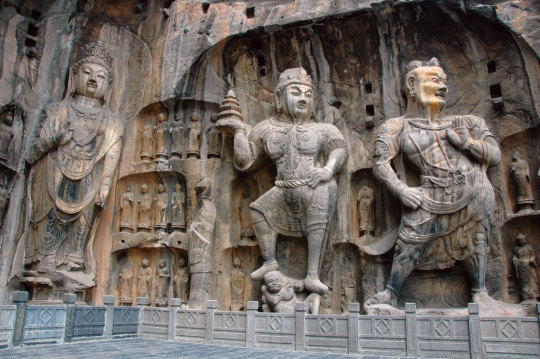
2 notes
·
View notes
Text
Longmen Grottoes - The treasure house of ancient Buddhist cave art in Luoyang
Longmen Grottoes – The treasure house of ancient Buddhist cave art in Luoyang
The grottoes contain the largest and most impressive collection of Chinese art of the late Northern Wei (386 to 534 AD) and Tang Dynasties (618 to 907 AD). The traditional Chinese Caves are some of the finest examples of Chinese Buddhist art. Housing tens of thousands of statues of Shakyamuni Buddha and his disciples.
This complex is one of the three notable grottoes in China. The caves have been…
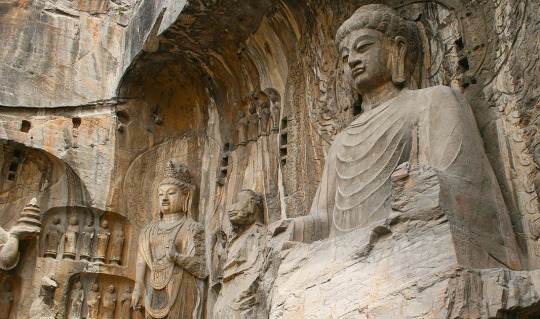
View On WordPress
0 notes
Photo
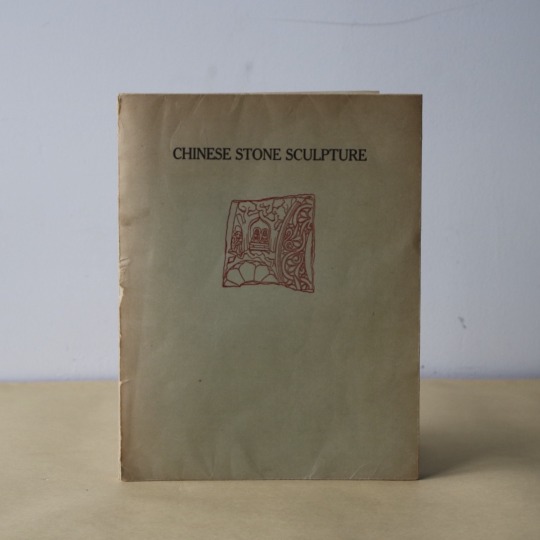

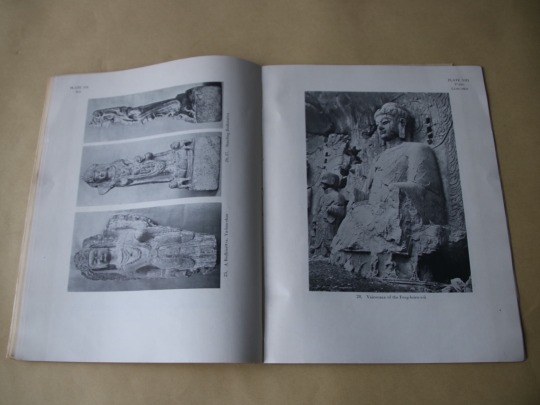
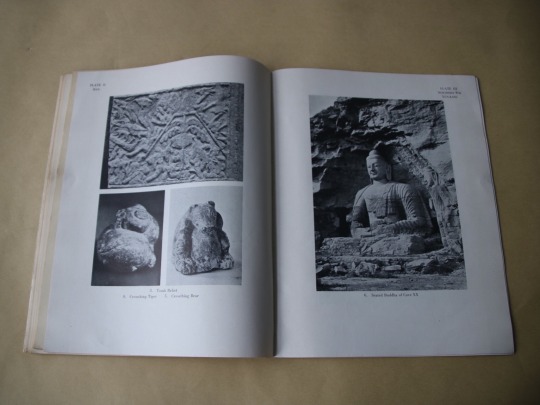
Chinese Stone Sculpture
https://www.abebooks.com/servlet/BookDetailsPL?bi=30686471770&searchurl=sortby%3D0%26vci%3D65071755&cm_sp=snippet-_-srp1-_-title1
0 notes